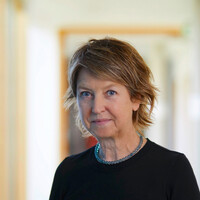

Femininity and Political Pattern
During her stay at the Collegium Helveticum, Anke te Heesen intends to write an essay that emerges from an iconographic observation: Towards the end of the 19th century, women were portrayed increasingly in front of patterns; women very often appear in a serially structured milieu of various arrayed ornaments. The decor surrounding them and its materiality—the wallpaper, the carpet, and the fabric—form an independent pictorial actor that defines the women depicted and, with them, the particular concept of femininity. These textile or paper patterns surround the person portrayed, and the materials assigned to them ensure that the figure seems to emerge from them or is drawn into them, that she is elevated from or sinks into the background of the picture. In short, the surrounding patterns ensure that the woman is provided with her very own adornment or camouflage. Defined in this way, the motif can be traced from late medieval depictions of the Virgin Mary to the “Reading Woman” in modernity. It takes up discussions of the second half of the 19th century about decorative arts, interiors, and the physiology of perception and remains significant to this day.
Discover more

